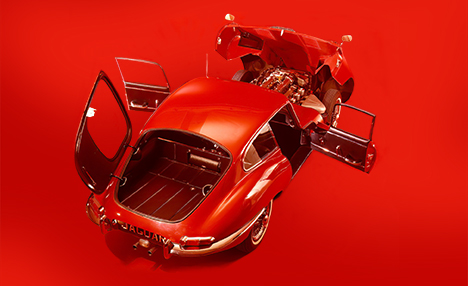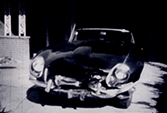The term “four-seat sports car” comes dangerously close to being in oxymoron.
Nevertheless, the reality is that some enthusiasts can participate in motorsports, even as spectators, only if they possess a means to transport a family comprised of Dad, Mum, and the oft-quoted, but statistically improbable, one-point-five offspring.
In the years just before and just after WWII, the auto industry, particularly the British, offered just such a body style. The Tourer, as it was labeled, had a sports car-like appearance; with folding top, side curtains, cut-down doors, and even a folding windscreen. Of necessity, the Tourer stood a bit taller than its sleeker two-passenger brethren. Tourers covered the full price spectrum, from Bentley, Lagonda, Invicta, and the like at the top of the market to Singer, Hillman, Standard, and MG in the popular price segment. I particularly recall several Singer Tourers giving a good account of themselves in the early days of SCCA competition. The MG Y Tourer appealed to me in 1950, and is even more suitable today now that in my arthritic seniority, I find it virtually impossible to get into or out of the true sports car.
So, while visiting Bruce Amster’s Hyannis Restorations on Cape Cod a few months ago when I discovered a magnificent MG Y Tourer, I begged for a photo session and a history update. Bruce willingly complied, even arranging for an interview with the car’s justifiably proud owner. With Bruce furnishing the logistics and Henry Herrmann, the car’s owner, supplying the actual vehicle, Cape Cod proved a spectacular and appropriate venue for the photo session. This assignment also served as an excuse to spend some time with my old friend, Roy Bamford, and his delightful wife, Kate. Some readers may recall Roy as Aston Martin-Lagonda’s marketing director in the James Bond glory days.
Painted black, with a luggage-tan leather interior and beige canvas, Henry Herrmann’s MC Y probably deserves its designation as the world’s best example. Bruce and I talked with the owner about a half-dozen subtle modifications that are hardly noticeable at first glance. A handsome wood-rim steering wheel has been fitted, and the dashboard has been made more elegant with a nicely grained veneer into which a more complete set of Smiths gauges have been mounted. These include a voltmeter and oil temperature gauge, all nicely matched and looking very OEM.
On top of the driveshaft tunnel, just left of the gear lever, is a turn signal lever (“trafficator” in the Queen’s English!) that has been re-wired to flash the parking and tail lamps rather than the semaphore-type flippers of the period. It’s a great enhancement in real-world terms. Similarly, fitment of a few power-increasing modifications also makes the car more enjoyable, though it probably never will appear in a drag race. Personally, I would have preferred convex lenses for the fender-mounted Lucas mirrors rather than flat glass, but that’s easily put right if one so chooses.
Two other modifications are worthy of note. The ultra-safety conscious owner, fearing impalement, has had the steering column re-engineered to collapse in the event of a head-on collision. The seats also have been altered in the quest for safety, anchored to a steel reinforced wood floorboard and fitted with Connolly-leather trimmed headrests that complement the traditional MG interior. Purists will appreciate the unobtrusiveness of this provision, a characteristic of all the custom features.
This also applies to a final pair of modifications, so subtle that at first they went unnoticed. First is the absence of the usual header-mounted windshield wiper motor, another collision-safety related decision of Mr. Herrmann; he or a passenger can operate the wipers manually in the unlikely event that the car ever is caught out in the rain.
Our second example of the Tourer body style dates to the days just prior to WWII. An early British-American hybrid, most Jensens of the 1930s were powered by Ford V8-60 engines that had been “improved” to put out somewhat more than their anemic original urge. A few were built with 6 cylinder Nash engines. Particularly impressive was the style and quality of the Hyannis discovery, features that are reinforced by superior hardware throughout.
Rear tonneau mounted Brooklands-type windscreens give this 1937 Jensen a sporting appearance, accented by the red-painted wire wheels that compliment the car’s red leather interior and ivory exterior. Like other Jensens of the period, this car features hand-crafted aluminum bodywork and a Columbia two-speed rear axle. Among its celebrity owners were actor/auto enthusiast Clark Gable and Edsel Ford, the style-conscious son of Henry Ford.







'At Full Chat: Winter 1999' has no comments
Be the first to comment this post!